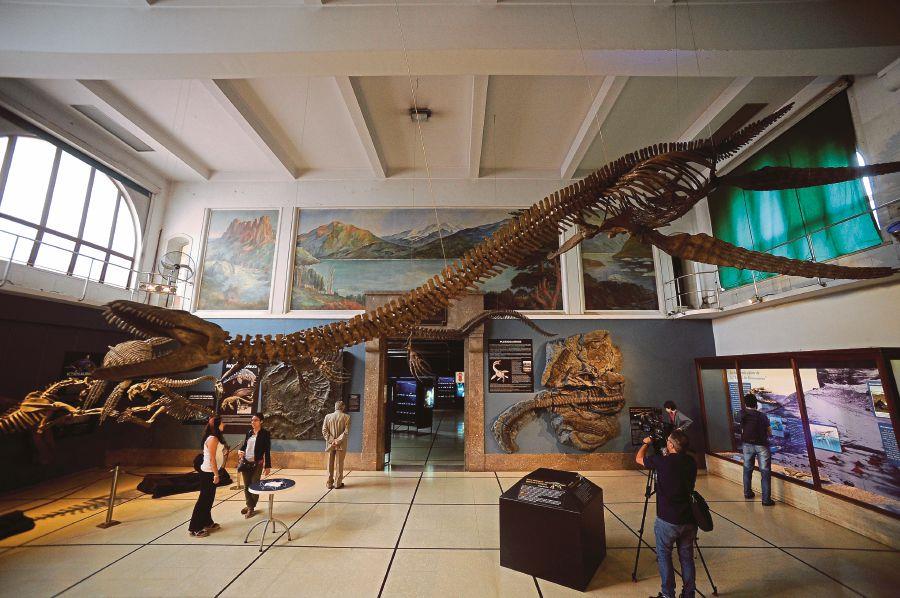BUENOS AIRES, Dec. 19 (Xinhua) -- The nearly complete skeleton of a dinosaur-era plesiosaur went on display in Buenos Aires on Wednesday, nine years after it was first discovered in southern Argentina.
The preserved remains of the extinct long-necked marine reptile, measuring 8 meters in length and 4 meters in width, are now on show at the Bernardino Rivadavia Argentine Museum of Natural Science.
"We worked on it for a long time, because the rock that contained it was very hard, tough like granite," paleontologist Fernando Novas said, referring to the years it took to extract, reconstruct and finally mount the skeleton uncovered in 2009.
"So, it was very difficult to work on. With a lot of patience, attention to detail, and without damaging the extremely fragile fossil, we succeeded in making the discovery available for view," he said.
The Mesozoic marine creatures became extinct 65 million years ago. Thanks to the well-preserved three-dimensional state of the skeleton, researchers will be able to find out more about the animal, he said, noting remnants found in other parts of the world have invariably been crushed.
"It is going to be a great source of information for everyone interested in the anatomy of these animals," said Novas.
Researchers will probably begin by comparing this sample to others to determine "how they were related to other creatures," he added.
"There was a whole fauna of marine animals that flourished in the warm seas that surrounded the Antarctic, which also lapped the coasts of Patagonia (in southern Argentina) and New Zealand. There is very interesting work ahead in the next few months," said Novas.
Extracting the fossil was no easy task, said Marcelo Isasi, a member of the team that worked on the skeleton.
"The field work was very unusual, because the fossil was submerged under Argentino Lake ... We had to dry the lake," said Isasi.
The Argentino Lake is located near El Calafate, in Santa Cruz province, some 2,080 km southwest of Buenos Aires.
